Polymer (plastic) well rings
In the courtyard of a private house there may be several wells: for drinking water, storm sewers, drainage systems, drains. What are they made of? Most often from concrete rings, another option is brickwork or a steel welded caisson. But they all have drawbacks: they are leaky, they can be destroyed by the action of water. Plastic rings for a well are devoid of these disadvantages. Let's talk about them further.
The content of the article
Scope of use
Plastic wells have many advantages. The most important thing is that they are sealed, do not enter into a chemical reaction with the environment, and slowly change their properties. Low weight adds advantages (it can also be a disadvantage). It's just not always easy to mount plastic rings for a well and they cost a lot.
Polymer wells can be used for various needs - from storing drinking water to organizing drainage and sewerage. Special plastic is used, according to its characteristics, it is selected for the field of application. So, here's where you can use plastic well rings:
- Storm sewer.
- Drainage system:
- viewing;
- drop-off;
- prefabricated.
- Sewerage (storage and filtration wells).
- Plumbing systems.
- For the construction of cable ducts. Plastic cable shafts allow access to power and communication cables buried in the ground.

The principle of assembling a sealed plastic well. In addition to rings, the kit includes a bottom, a cone and a hatch
What can be counted among the pluses of using plastic for wells? The first is that moisture in any form does not enter the whole body. This is true for drinking water. For wastewater collection, this is also important, as well as the fact that the contents also do not get into the surrounding soil in any form. If we talk about storm drainage and drainage, the important thing here is that the walls of the container are smooth and easy to clean. And yet - plastic does not react with either the contents or the environment.
Another area where plastic well rings are useful is restoration. The task is not easy and dangerous. Working in a dilapidated well, when the logs have almost rotted or the concrete rings have moved, is the height of recklessness. It is much safer and easier to restore it with a plastic ring insert made of food grade plastic. The disadvantage of this solution is the high price and decrease in useful volume. After all, the insert should be of a smaller diameter, plus they are made with stiffeners.
Plastic rings for a well: materials
Raw materials for the manufacture of polymer wells can be different - from food grade polyethylene to recyclable materials. Plastic rings for a well can be made of PVC (polyvinyl chloride), high pressure polyethylene (LDPE), there are polymer sand and polypropylene (PP). For our climate, such a parameter as frost resistance and the number of freeze / thaw cycles that the material can withstand is very important. Well, the thickness of the walls, the size and number of stiffeners - all this is also important and must be taken into account.
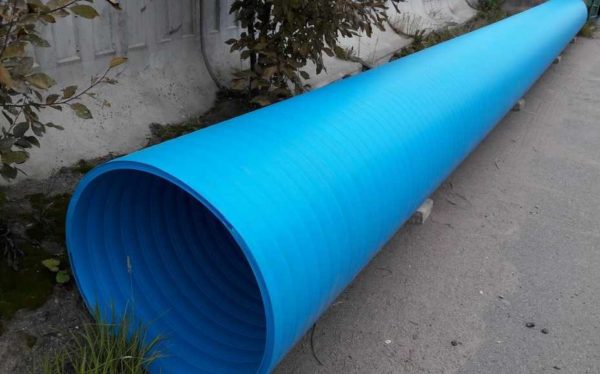
Plastic rings for wells are made from polymers. There are options from glass polymers - for operation in heaving soils
The material from which the well rings are made is selected, depending on the purpose of the well. For the device or repair of a drinking water tank, the best plastic made of food grade polyethylene are considered. Moreover, polyethylene must be primary, without impurities or additives of recycled polyethylene (from recyclable materials).
For difficult soils - heaving, clay, unstable - it is better to take polymer-sandy plastic well rings. They are thicker (50 mm is not uncommon), heavier. These characteristics make them suitable for use in harsh environments.
Sizes, types and varieties
If we talk about height, plastic rings for a well can be as follows:
- one-piece pipe of the required depth (insert into ready-made reinforced concrete wells);
- a section several meters long (depending on the manufacturer), which can be extended with inserts to the desired size;
- sections of different heights (from 20 cm to 1 m) with a tongue / groove lock and a rubber gasket;
- ring height from 20 cm to 150 cm with threaded connection.
It is also worth saying that there are options with a bottom and without a bottom, adapter rings for changing the diameter, hatches with plastic covers. In plastic rings, bends of different sizes can be provided for connecting pipes, installing pumps and other equipment. There are options for the lower tiers - with the possibility of "anchoring". That is, the whole system is very similar to a children's construction set with a certain set of elements. From these elements you assemble the structure you need.
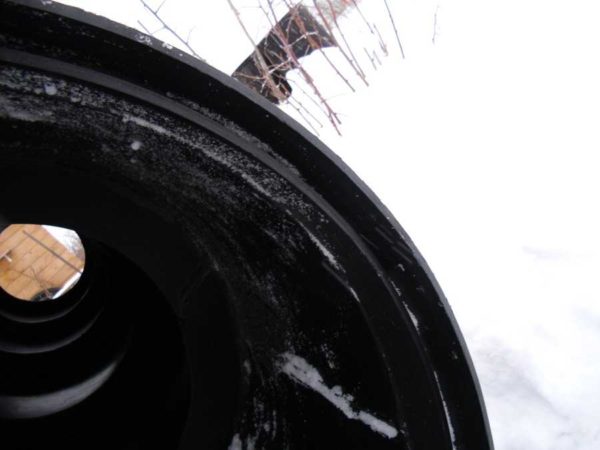
Here is a groove in which a rubber gasket is placed or filled with a polymer two-component sealant (you can also use silicone)
The diameter of the plastic well rings is from 60 to 100 cm. But you have to look, is it an inner diameter or an outer one. For better resistance to soil pressure, the walls are made with stiffeners. They can be 5 cm or more. So with an outer diameter of 90 cm, the inner diameter will be 78-75 cm (depending on the wall thickness).
A well for drinking water from plastic rings: how to make
Plastic rings for the well are usually installed in a pre-dug pit. A hole is dug to the required depth, the diameter of which is 150-200 mm larger than the diameter of the rings to be installed. They cover the bottom geotextile - so that silting does not occur. The geotextile should extend onto the pit walls by at least 50 cm. A layer of rubble (about 20 cm) is laid on it, geotextile is folded over. Crushed stone is used to filter the incoming water. Further, the order of work is as follows:
- Collect the pipe of the required length. When connecting (thorn-groove or thread), the joint is coated with polyurethane sealant. Solid pipes of the required size can also be used. They can be up to 12 meters, but if the depth is large, there will be problems with delivery.
- They lower it into the pit.
- Crushed stone is poured between the walls of the pit and the plastic. It will serve to neutralize the spring heaving.
- Install the bottom filter.
- Connect the outlet pipes (if any).
- Install the cover.
As you can see, the biggest challenge is to dig a hole of the required depth. If the ground is dense and stable, the technique can work, but not to any depth. Very often you have to go deep manually. Problems also arise if the walls crumble. Then you have to put rings as you deepen. In this case, it is necessary to dig manually - either outside or in the ring, upsetting the column.
Deepening an existing well
The debit of water is constantly changing, and not always for the better. If there is not enough water in the well, they try to deepen it. It is easier to do this with plastic rings.
Concrete, log house
Even a well made of concrete rings can be deepened with plastic rings.We take out the soil only in the center so that the concrete walls do not move down. They stay at the same depth. We deepen only the middle. The “middle” size should be larger than the outer dimensions of the repair rings. The disadvantage of this method is that the rings need a smaller diameter. That is, again, the water reserves will be less, but there is no need to dig a new well.
We raise the soil to the surface until there is a sufficient debit of water. Next, we clean the bottom, lay a layer of geotextile, put its edges on the walls. We pour crushed stone, align, on this pillow we install the rings of the required height assembled on the surface. Next, at the bottom, we arrange a bottom filter, as in an ordinary well.
Since plastic is lighter than water, the installed plastic repair rings must be weighted. For this purpose, any load is suitable, contact with which is not terrible for water. Ideally, stainless steel blocks, large gravel boulders. This load can be removed in 6-9 months - during this time the soil will "squeeze" the rings and they will not rise under any conditions.
This method of deepening the well is safer, but not ideal. The result is that the water will be in the plastic insert. She's a little narrower, but it's better than nothing. Everything goes much easier than trying to add concrete rings. They must be placed on top, and, when the existing ones are draining, it is not clear how the entire column will behave.
How to make a plastic well deeper
If you have a plastic well, it is usually small in diameter and it is difficult and inconvenient to work inside. If you need to make it deeper, the plastic sleeve is taken out of the hole. Then you will have to clean out the crushed stone that has fallen to the bottom, with which the gap between the walls of the pit and the sleeve was filled. Then they remove the bottom filter, begin to take out the soil to the desired depth. In the future, the actions "inside" do not differ: we remove the soil until the amount of incoming water is sufficient.
On the surface, the required number of plastic rings is added to the finished body and the whole is installed in the shaft on a crushed stone pillow. Further actions are already known: we make a bottom filter, we fill up gravel between the walls. In general, not too difficult, apart from the land work.
The disadvantage of this method is that if the soil is loose, this trick will fail. By removing the plastic sleeve from the well, you will deprive the walls of the support. This can lead to complete or partial shedding. In this case, perhaps more justifiably well device.
Installation of plastic rings for technical wells
The process of installing a plastic sewer well or a well for any other purpose is not much different from that described. The difference can only be when installed on soils prone to heaving. In this case, there is a possibility that the container will be pushed upward. To avoid this, the plastic rings for the well are fixed. The most commonly used term is "anchoring" and the pushing process is called "surfacing".
The traditional solution is to dig a pit a little deeper than required, to make a gravel or sand-gravel bed at the bottom. On this pillow you can put an "anchor" - a concrete slab. It can be a ready-made stove or a homemade one. The dimensions are larger than the bottom of the well. The slab should have hooks or "ears" to which plastic rings are attached with cables (stainless or polymer). Then the gap between the walls of the dug hole and the well is filled up. For heaving soils, it is better to use medium or coarse gravel rather than native soil.

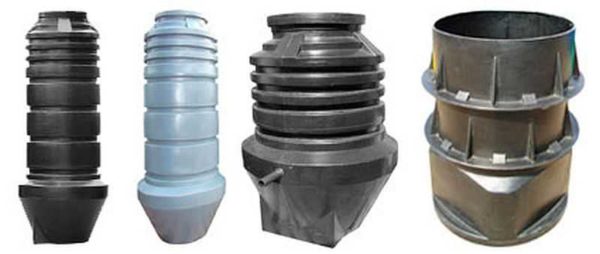
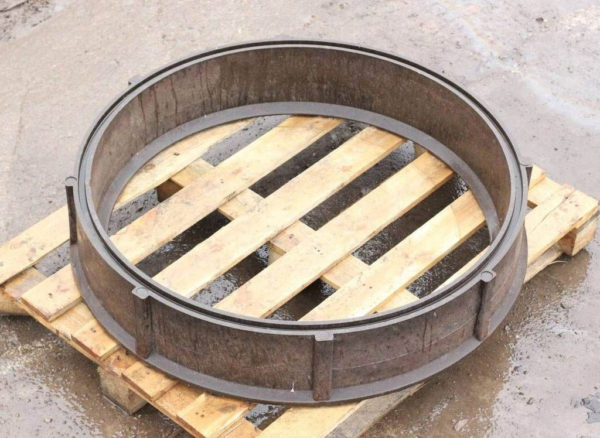
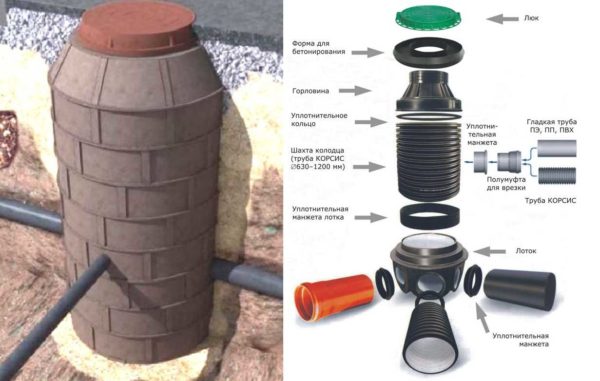
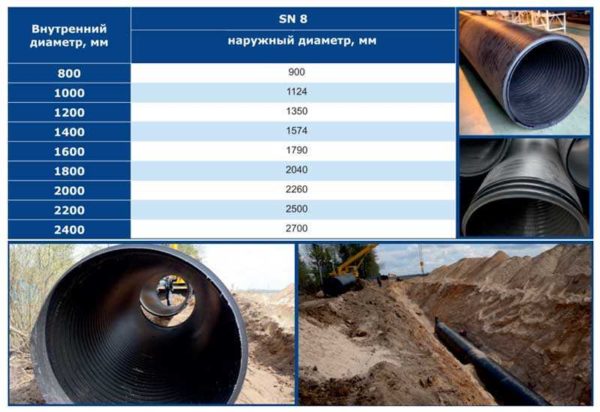
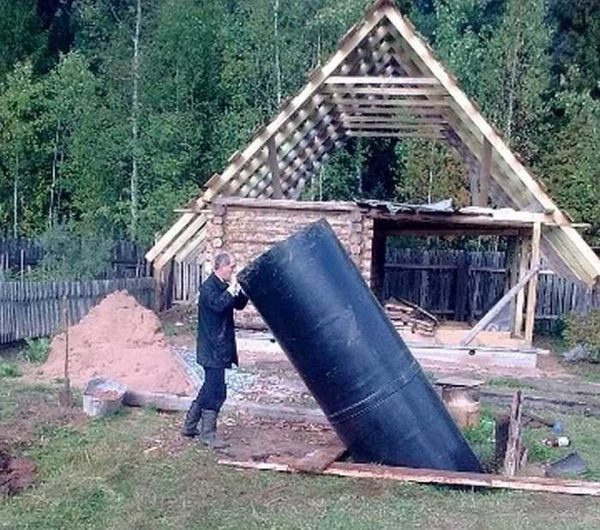
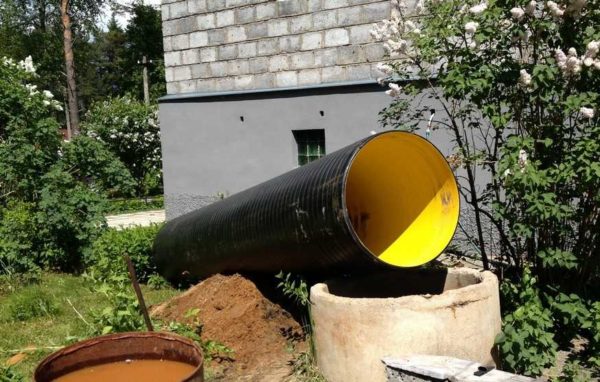
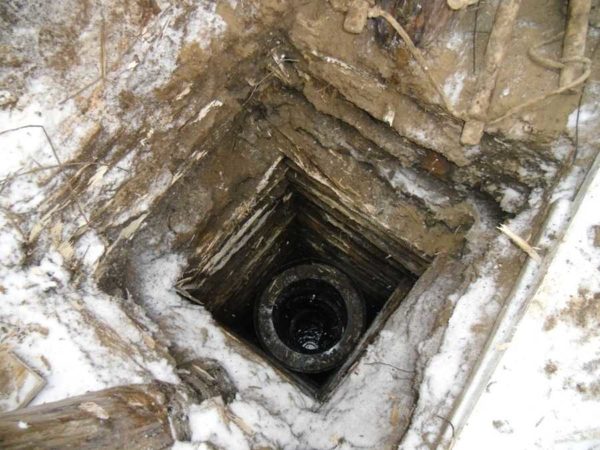
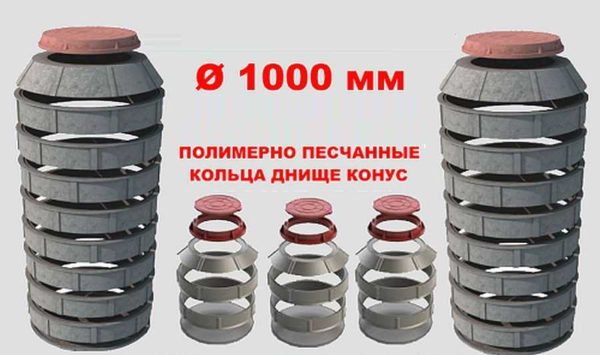
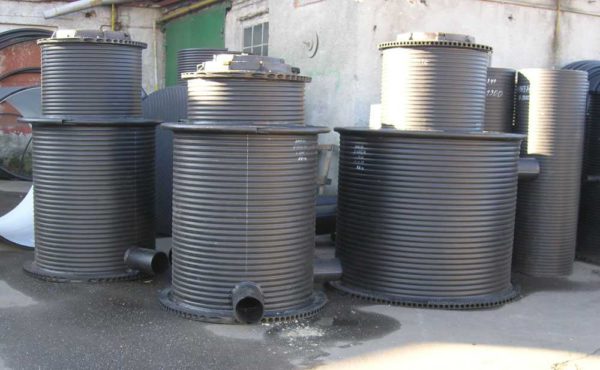










Interested in prices for rings for a well.